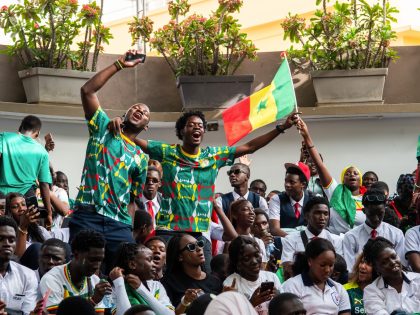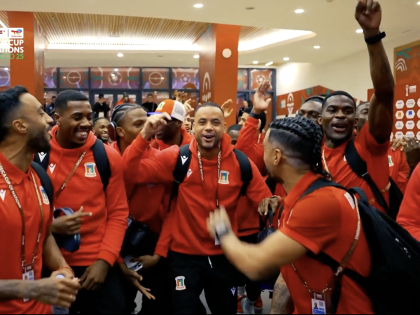How we tell stories about cities
We must not forget the everyday lived realities and struggles in vanished neighborhoods.

Fietas in Johannesburg.
A few weeks ago, Nigerian-American writer Teju Cole was the guest of the Troyeville Hotel book club in Johannesburg. Observing that the one constant in cities is that they change, Cole commented: “Cities are built on people’s bones. How, then, do we tell stories about cities so that those who have died, do not die a double death through forgetting? Below us, on street corners, are people’s dreams.”
This question is particularly worth asking in South Africa, where apartheid urban planning ripped up, dispersed, and transplanted whole communities, fragmenting families, and shattering ways of living. As we struggle – still – to decide how to remember this displacement, and what to do with the tracts of, often, semi-occupied left behind after forced removals (District Six being the obvious example), we must not forget, as Cole notes, the everyday lived realities and struggles in vanished neighborhoods.
One response to Cole’s question can be found in the newly-opened Fietas Museum in Johannesburg. Fietas – or Pageview – is a suburb to the west of the city centre. Established in 1893 as one of the three ‘locations’ for black people in Johannesburg, Fietas became progressively more racially mixed, as Indian, African, Chinese, and ‘coloured’ people moved there, in search of an area where they could live legally near the CBD.
Like Sophiatown and District Six, Fietas developed a distinct urban character, focussed around Fourteenth Street. Shops, owned largely by Indian families, schools, mosques, temples, cinemas, and cafes drew people from both the surrounding suburb and other areas into this small, tightly packed, and intensely busy community. Nat Nakasa wrote (and this quote appears on either side of the museum’s entrance):
Well-known Nationalists come all the way from the platteland to buy in Fourteenth Street. It is possible to find members of the Johannesburg Stock Exchange or a City Councillor’s wife waiting to be served after an African labourer in Fourteenth Street.
Then what Nakasa calls the ‘bungling’ happened: under the Group Areas Act, Fietas was rezoned white. From 1957 onwards, the suburb was gradually emptied of its racially mixed population. A group of 67 families formed the Save Pageview Association in 1977 to contest forced removal, and mainly through the courts. However, the majority of traders made to relocate to the Oriental Plaza, and homes and businesses were bulldozed. What does remain of the original Fietas is because of the efforts of the Association.
Today, Fourteenth Street is a quiet suburban street in a litter-strewn, declining suburb.
But with its bright blue and red façade, the Fietas Museum is an attempt if not to breathe life back into this street, then to remind Pageview of a complicated, angry past which it – and Johannesburg – is at risk of forgetting.
The Museum was conceptualized and set up, and is now run and partly owned by Salma Patel, a former media researcher and lifelong activist, whose family has a long history not only in Fietas, but also in the building in which the museum is housed. Number 25 Fourteenth Street was one of the few buildings to survive the destruction of Fietas. Until 1977, it was owned by the Surtee family, and Surtee’s, a men’s clothing business, and Kay’s Fashion occupied the ground floor of the building.
Patel’s parents – who were both related to the Surtees – were married in the family’s living quarters above the shop, where Patel herself has lived since 1987. Surtee’s Silk Store acted as a kind of hub for the community: a place for Salma to play as a child, but also a meeting space, and a site of opposition to the apartheid state. The funeral of Suleiman M. Nana, Secretary of the Transvaal Indian Congress, took place at Surtee’s too – and was attended by 13,000 people, who crowded into Fourteenth Street and surrounds.
The museum does three things. Firstly, it remembers the multiracial history of Fietas and, more specifically, the forced removals in the late 1970s. It is a record of the urban culture and, indeed, the architecture – the city planning – destroyed by the Group Areas Act. Occupying the ground floor of the former shop, one room is dedicated to a powerful exhibition of photographs by David Goldblatt and Paul Weinberg, who documented the beginning of the area’s decline.
Secondly, the museum charts residents’ – and former residents’ – memories of Fietas. As Patel explained, it is a ‘living museum’: it needs to be filled in by the people of Fietas themselves. Its second room has along one wall, a map of Fietas where visitors are encouraged to pin photographs, letters, and other records of their experiences of the suburb. It is, in one way, an evolving, deeply personal timeline which records ordinary lives in Pageview.
As Surtee’s used to be a focal point for social and political life in Fietas, so this museum is, slowly, positioning itself to be, again, a place where residents can gather, partly to remember, but also to think about the suburb’s future.
The museum’s third aim is to force a conversation about what is happening – or not happening – to Fietas at the moment. The museum presents no narrative of triumphant overcoming of past injustices. It is, according to Patel, a record of people’s disempowerment. As several of Goldblatt’s photographs show, residents marked their rage against forced removals by writing the slogan ‘Fietas Died Today’ on houses and buildings. The museum does not suggest that there is any chance of reviving the vibrancy of Fourteenth Street: that Fietas is dead and gone. The question that it asks, though, is what to do with Pageview as it is now? Will it be allowed to slide into further decay, or will it be remade?
But rather like Fietas itself, the museum’s future is a precarious one. The Wits History Workshop provided assistance in researching aspects of the suburb’s past, and the museum has received some funding (the Johannesburg Heritage Trust funded the opening exhibition, and the Directorate of Community Development and the Directorate of Arts and Culture paid for the Museum’s launch), but the museum building is funded entirely by the Patel family. This is despite the fact that the Department of Arts and Culture’s decided to recognize Surtee’s as a heritage site in 2007. Local schools have displayed some interest in visiting, and the Museum has received positive coverage in local media.
This is not, though, enough. The museum is important not only because it is an attempt to ward off the ‘double death’ referred to by Cole, but because it addresses uncomfortable questions about Johannesburg’s present – and future.
- If you’re in or visiting Johannesburg, the museum is open Sunday-Friday, 10:00-16:00. It is closed 12:00-14:00 on Fridays. The entrance free is R50 (about US$5). Contact Salma Patel for more information: [email protected].





















